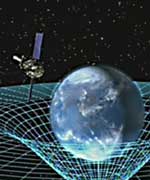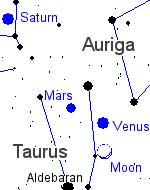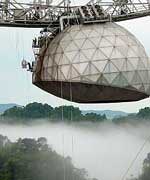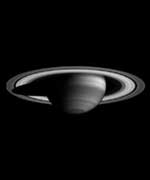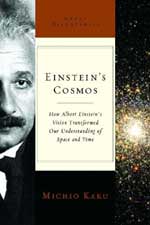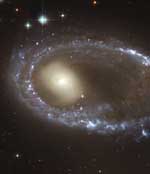
Image credit: NASA/JPL
NASA’s Mars Exploration Rover Spirit took more panoramic camera images of the “Columbia Hills” as it continued its long trek across the Gusev Crater floor. Spirit is still approximately 2 kilometers (1.2 miles) and 52 sols away from its destination at the western base of the hills.
Once Spirit reaches the base, scientists and rover controllers will re-analyze the terrain and determine whether to send the rover up the mountain. Another option will be to send Spirit south along the base where she may encounter outcrops as indicated by orbital images from the Mars Orbiter Camera on the Mars Global Surveyor spacecraft.
Finding outcrops has become a surprise target for some mission scenarios, mainly because they can represent the geological timeline of an area if exposing bedrock. Unlike other parts of the surface, bedrock shows materials not transported from somewhere else by dust and wind.
Meanwhile on the other side of the planet, the Mars Exploration Rover Opportunity has broken another mission record, this time drilling the deepest hole ground into a rock on another planet. While only 7.2-millimeter (about 0.28-inch) deep into the rock “Pilbara,” the rover’s grinding power has proven valuable to getting at least below the first weathered layer.
The now familiar “blueberries,” or spherules, are present in this rock, however, they do not appear in the same manner as other berries examined during this mission. Reminiscent of a golf tee, the blueberries sit atop a “stem,” thus making them even more of an obstacle through which to grind.
The plains appear to be uniform in character from the rover’s current position all the way to Endurance Crater. Granules of various sizes blanket the plains. Those same spherical granules fancifully called blueberries are present – some intact and some broken. Larger granules pave the surface, while smaller grains, including broken blueberries, form small dunes. Randomly distributed 1-centimeter (0.4 inch) sized pebbles make up a third type of feature on the plains. The pebbles’ composition remains to be determined.
Examination of this part of Mars by NASA’s Mars Global Surveyor orbiter revealed the presence of hematite, which led NASA to choose Meridiani Planum as Opportunity’s landing site. The rover science conducted on the plains of Meridiani Planum serves to integrate what the rovers are seeing on the ground with what orbital data have shown.
The hole left by the rock abrasion tool after two hours and 16 minutes of grinding was 7.2 millimeters (about 0.28 inches) deep and 4.5 centimeters (about 1.8 inches) in diameter. The tool swept the hole clean after grinding, leaving the ring of cuttings around the hole.
The team has developed a new approach to commanding the rock abrasion tool that allows for more aggressive grinding parameters. The tool is now programmed, in the event of a stall, to retreat from its target and attempt to grind again. This allows the grinder to essentially reset itself instead of aborting its sequence altogether and waiting for further commands from rover planners.
Original Source: Astrobiology Magazine

